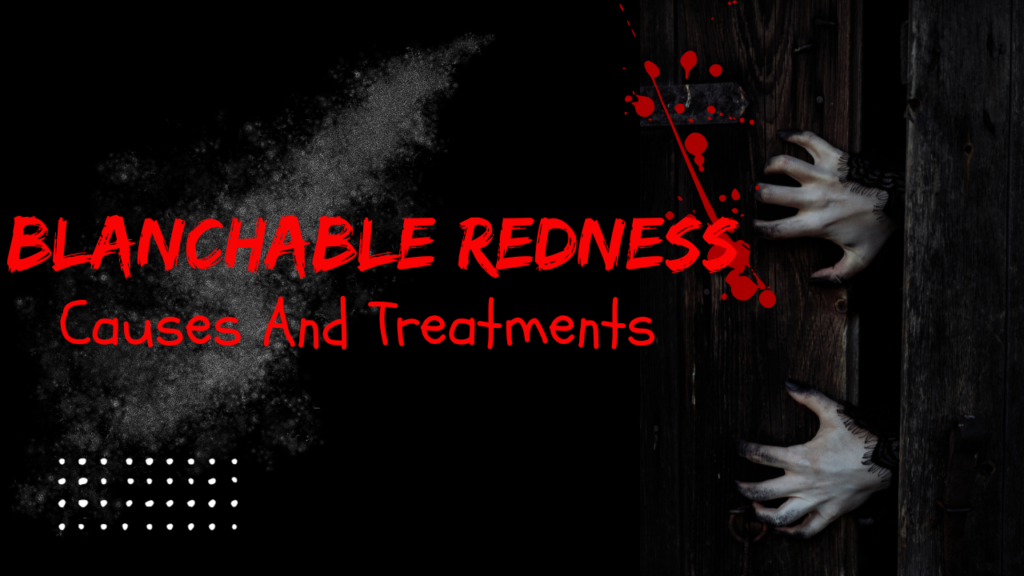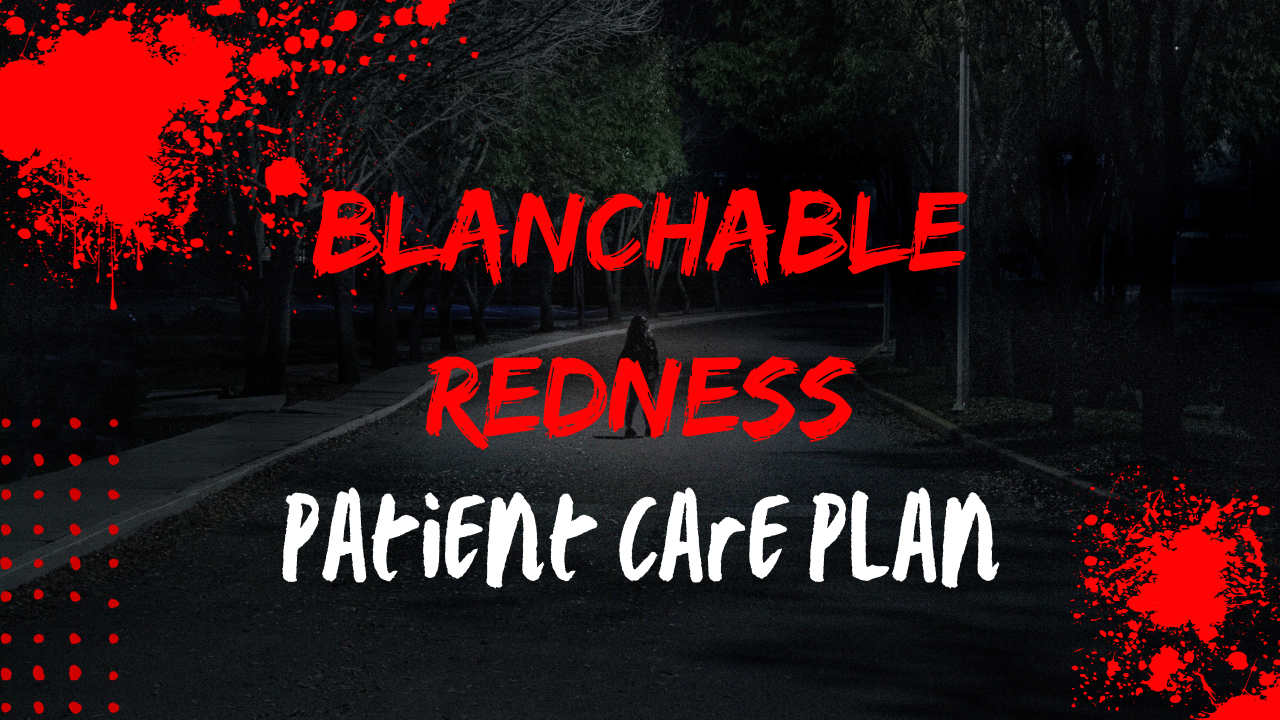Introduction of Blanchable Redness
Blanchable redness, a seemingly innocuous term, carries profound implications in the realm of healthcare. In our journey through this article, we unravel the mysteries surrounding blanchable erythema, exploring a prospective study conducted among university hospital patients. Join us as we delve into the abstract, materials, methods, and intriguing results of this study. This concise exploration promises insights into the world of skin health, offering practical tips and knowledge that could impact your well-being. Let’s dive into the depths of blanchable redness—a topic that goes beyond the surface and deserves your attention.
Prospective Study on Blanchable Redness
Blanchable erythema, a condition warranting scrutiny, has found itself under the spotlight in a prospective study conducted among university hospital patients. Spearheaded by eminent researchers including Chie Konishi, Junko Sugama, Hiromi Sanada, Mayumi Okuwa, Chizuko Konya, Tomoe Nishizawa, and Kimi Shimamura, this collaborative effort aimed to shed light on the intricacies of blanchable erythema.
Key Points:
- Overview of the Study: The study takes us on a journey through the experiences of university hospital patients, examining the prevalence and characteristics of blanchable erythema. By focusing on this specific demographic, the researchers aimed to draw connections between academic settings and the occurrence of this skin condition.
- Key researchers: Chie Konishi, Junko Sugama, Hiromi Sanada, Mayumi Okuwa, Chizuko Konya, Tomoe Nishizawa, and Kimi Shimamura form the backbone of this research endeavor. Their expertise and collaborative efforts bring a multidimensional perspective to the study, ensuring a comprehensive understanding of blanchable erythema.
- Significance of the Study: This study is more than an academic pursuit. It holds significance in the practical realm of healthcare, providing valuable insights into the prevalence, characteristics, and potential consequences of blanchable erythema. The results could improve patient care and have an impact on clinical procedures.
- As we explore the complexities of this potential study, we not only learn more about blanchable erythema but also develop a greater respect for the teamwork of these renowned researchers.
The next sections will delve into the abstract, materials and methods, and enlightening results, offering readers a comprehensive understanding of the implications of blanchable erythema in a university hospital setting.

Abstract of blanchable redness
The abstract serves as the gateway to the study, offering a succinct yet comprehensive overview of the objectives and findings related to blanchable erythema among university hospital patients. In this section, we distill the essence of the study, providing a snapshot that entices readers to delve deeper.
Key Points:
- Summary of Objectives: The abstract encapsulates the primary goals of the study, outlining what the researchers set out to achieve. Whether it’s identifying the prevalence of blanchable erythema or understanding its implications, the abstract sets the stage for the reader.
- Findings in a Nutshell: While maintaining brevity, the abstract reveals key findings and insights discovered during the study. This could range from the incidence of blanchable erythema to significant correlations and potential consequences.
- Objective Language: Abstracts are characterized by their objective tone, devoid of unnecessary details or embellishments. This section adheres to the principles of scientific writing, delivering information clearly and concisely.
As readers navigate through the abstract, they gain a rapid understanding of the study’s purpose and its significant outcomes. This succinct section serves as a teaser, inviting those intrigued by blanchable erythema to proceed further into the intricate details of the research.
Materials and Methods
The foundation of any scientific study lies in its materials and methods section, which provides readers with a roadmap of how the research was conducted. In the case of the prospective study on blanchable erythema among university hospital patients, this section reveals the meticulous planning and execution behind the investigation.
Key Points:
- Research Design: A critical aspect of the study, the research design outlines the blueprint followed by the researchers. Whether it’s an observational study, a clinical trial, or another design, this sets the stage for understanding how data was collected and analyzed.
- Setting and Subjects: The where and who of the study—this subsection provides details about the location (a university hospital) and the subjects involved. It could include demographic information, ensuring readers comprehend the context in which the research took place.
- Accuracy of Blanchable Erythema for Predicting Pressure Ulcer Development: One of the central themes, this aspect dives into the specific focus of the study. How effective is blanchable erythema as a predictor of pressure ulcer development? This question guides the research, and the methods used to address it are outlined in this subsection.
- Deteriorating Factors Involved in the Progress from Blanchable Erythema to Pressure Ulcer: Another crucial dimension, this part explores the factors contributing to the progression from blanchable erythema to more severe conditions like pressure ulcers. The methods employed to identify and analyze these factors are elucidated here.
- Ethical Considerations: Research involving human subjects necessitates a keen awareness of ethical considerations. This subsection details how the researchers ensured the well-being, rights, and privacy of the participants were protected throughout the study.
- Statistics: No scientific study is complete without a statistical analysis. This part of the materials and methods section outlines the statistical methods employed to interpret the data. Whether it’s regression analysis, t-tests, or another approach, readers gain insights into the rigor applied in drawing meaningful conclusions.
As readers traverse the materials and methods section, they gain a profound understanding of the groundwork laid by the researchers. From the study’s inception to the analytical techniques employed, this section forms the backbone of the investigation, fostering confidence in the validity and reliability of the findings to be presented later.
ReadMore

Understanding Blanching of the Skin
Blanching of the skin, the phenomenon at the heart of blanchable erythema, demands a clear and concise understanding. This section serves as an informative exploration, defining and explaining blanching while delving into its various causes and implications.
Key Points:
- Definition and Explanation: To lay a solid foundation, this subsection succinctly defines blanching of the skin. Readers are introduced to the concept, understanding it as the whitening or paling of the skin upon pressure. A clear and concise definition ensures accessibility for a broad audience.
- Causes of Blanching: Blanching isn’t a one-size-fits-all phenomenon. Here, the article explores the various causes, with a spotlight on Raynaud’s phenomenon and different skin conditions. By understanding the underlying factors, readers gain insights into the diversity of conditions that can manifest as blanchable erythema.
As we navigate through this section, the goal is to demystify the blanching of the skin. By providing a clear understanding of this phenomenon and its diverse causes, readers are equipped with foundational knowledge that enhances their grasp of blanchable erythema. This sets the stage for the subsequent sections, where the focus shifts to practical aspects such as signs, diagnosis, and treatment.
Signs of Blanching of the Skin
Recognizing the visual signs and symptoms of blanchable erythema is crucial for early identification and intervention. This section delves into the various indicators that individuals and healthcare professionals should be vigilant about, enhancing awareness and facilitating prompt action.
Key Points:
- Visual Indicators: Blanching of the skin manifests through distinct visual cues. This part of the article details what individuals should look for, whether it’s changes in skin color, temperature, or other observable features. By providing a comprehensive list of visual indicators, readers can better identify potential instances of blanchable erythema.
- Subtle Signs and Symptoms: Beyond the obvious, this subsection explores subtle signs and symptoms that may accompany blanching of the skin. Comprehending these subtleties is crucial, as it facilitates a more thorough evaluation of the state.
- Readers learn about the subtle changes that could indicate the presence of blanchable erythema by navigating through the signs of skin blanching. This section functions as a useful manual to help people self-evaluate and to help medical professionals identify possible cases in a clinical setting. The intention is to equip readers with the information they need to act and intervene promptly.
When to Seek Medical Help
Understanding when to seek medical help is crucial in the context of blanchable erythema. This section provides clear guidelines for individuals, caregivers, and healthcare professionals, ensuring that timely intervention occurs when necessary.
Key Points:
- Guidelines for Individuals: The article Blanchable Redness outlines specific scenarios in which individuals should consider seeking medical assistance. Whether it’s persistent skin changes, associated pain, or other concerning symptoms, these guidelines serve as a practical reference for those directly affected by blanchable erythema.
- Caregiver Awareness: Recognizing that caregivers play a crucial role, the article also addresses when caregivers should advocate for medical attention. This includes scenarios where individuals may be unable to express their discomfort or where the progression of blanchable erythema raises concerns.
- Healthcare Professional Perspective: From a healthcare professional standpoint, this subsection sheds light on when medical intervention is warranted. Clear parameters are outlined, offering a standardized approach to assessment and potential treatment.
By navigating through this section, readers gain a nuanced understanding of when to transition from self-monitoring to seeking professional medical help. The goal is to empower individuals, caregivers, and healthcare professionals alike, fostering a proactive and collaborative approach to managing blanchable erythema and its potential complications.

Treatment for Blanching of the Skin
Blanchable erythema must be treated with a multimodal strategy that addresses the underlying causes, stops the condition from getting worse, and manages symptoms. This section delves into the diverse treatment approaches and measures that medical practitioners can utilize to alleviate the consequences of skin blanching.
Key Points:
- Topical Treatments: Depending on the severity of blanchable erythema, healthcare professionals may recommend topical treatments.
- Lifestyle Modifications: Lifestyle plays a crucial role in managing blanchable erythema. This subsection outlines practical lifestyle modifications, such as avoiding prolonged pressure on affected areas, maintaining proper hygiene, and adopting a skincare routine tailored to the individual’s needs.
- Systemic Interventions: In cases where blanchable erythema is associated with an underlying medical condition, systemic interventions may be necessary. This could involve medications or therapies aimed at addressing the root cause and preventing further complications.
- Preventive Strategies: Recognizing the importance of prevention, the article explores strategies to minimize the risk of blanchable erythema.
As readers engage with this section, they gain a comprehensive understanding of the arsenal of tools available for managing blanchable erythema. From localized interventions to broader lifestyle changes, the goal is to provide readers with a nuanced perspective on the treatment landscape. This empowers individuals to collaborate effectively with healthcare professionals and adopt a proactive stance in managing their skin health.
Conclusion of blanchable redness
In the journey through the intricacies of blanchable redness, we’ve navigated a landscape that encompasses prospective studies, diagnostic nuances, and practical interventions. From the collaborative efforts of esteemed researchers to the tangible strategies for skin care and treatment, this article aimed to demystify a condition that often lingers beneath the surface of awareness. As we conclude, the message is clear – blanchable erythema is not merely a skin condition; it’s a dynamic interplay of factors that demand attention.



One thought on “Blanchable redness: Full Patient Care Plan 2023”